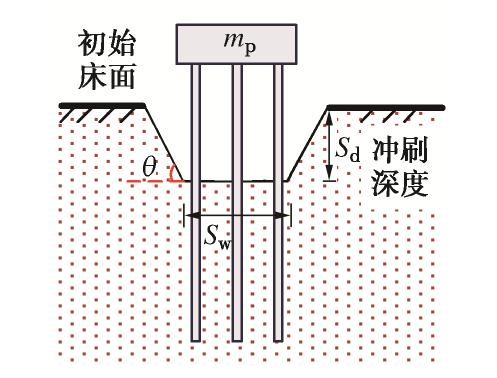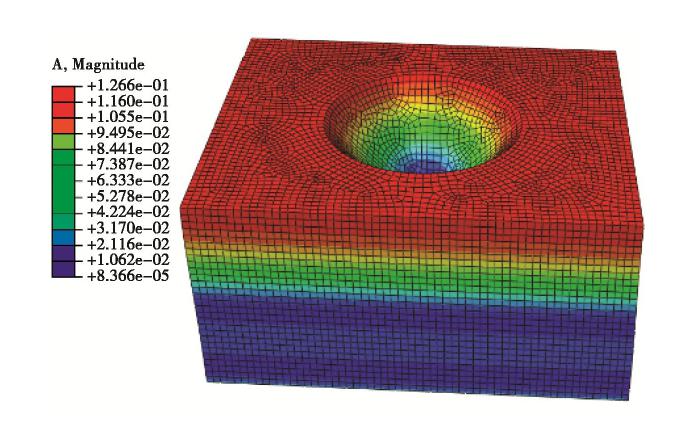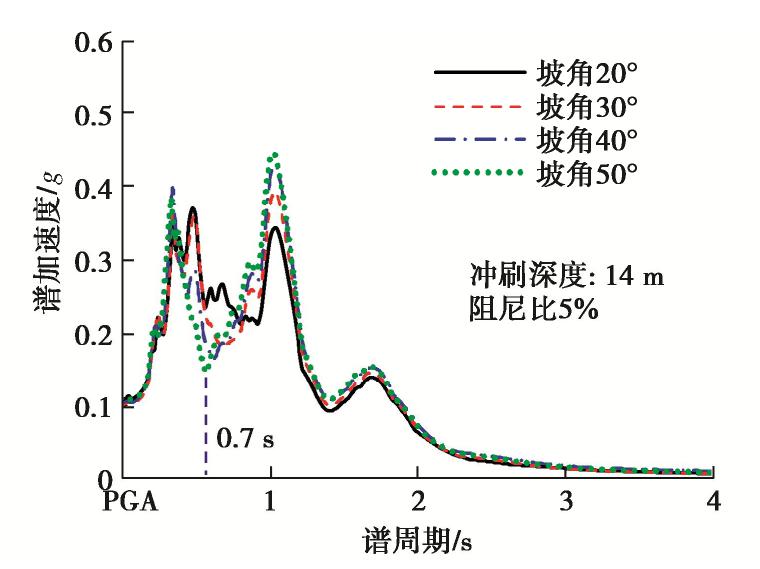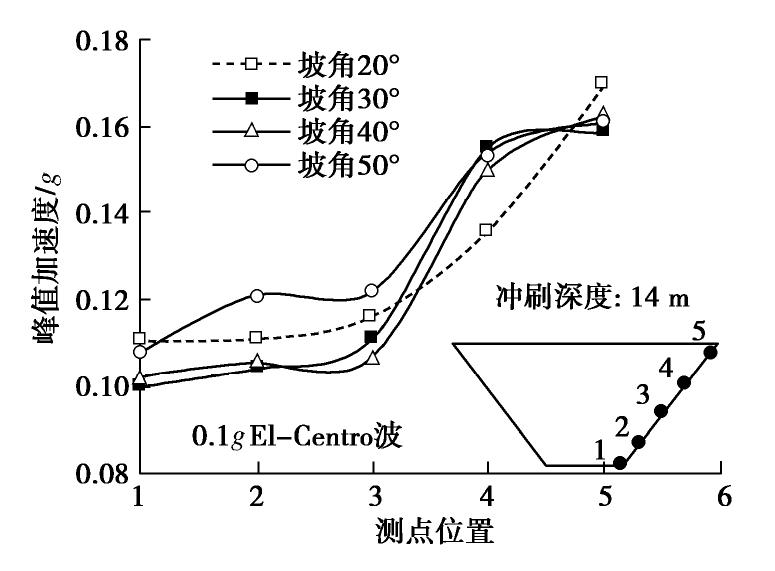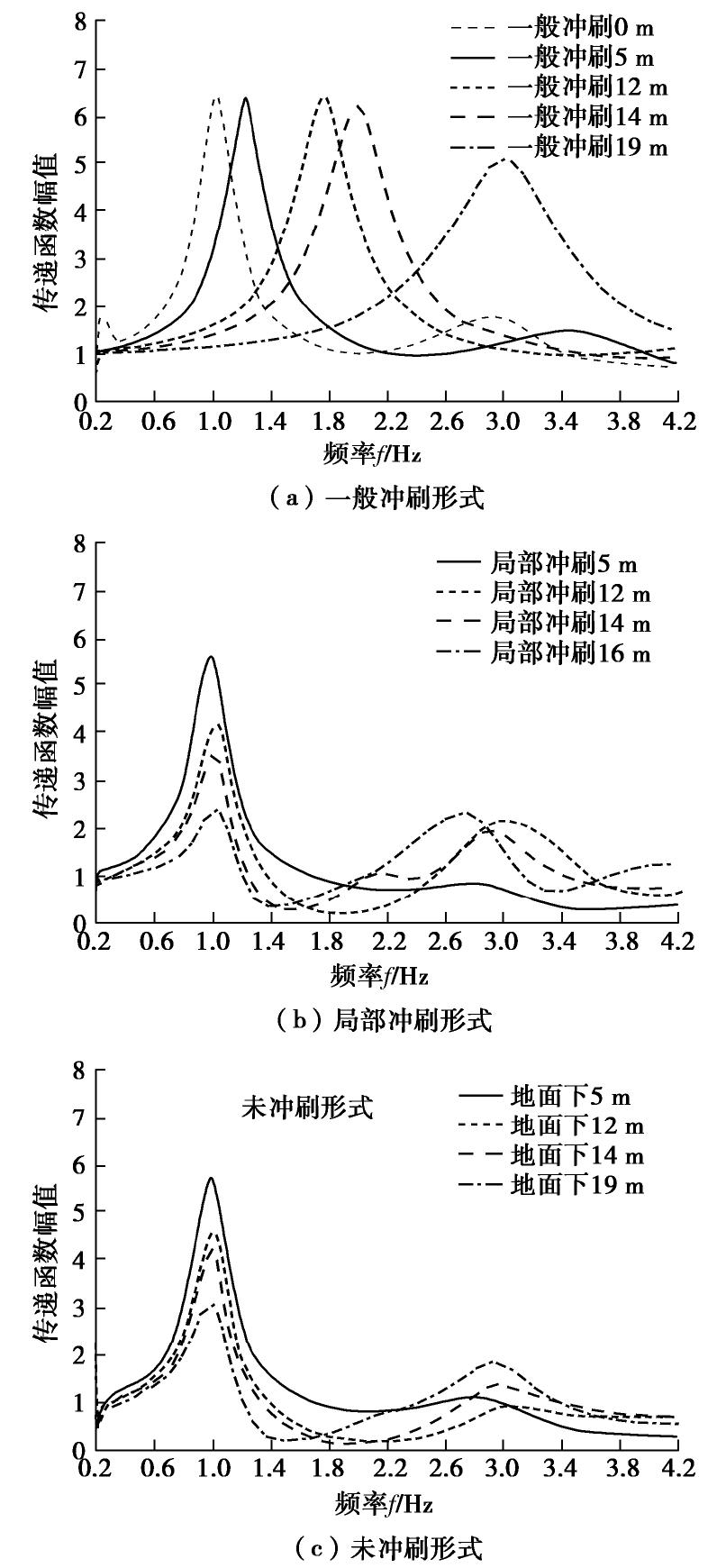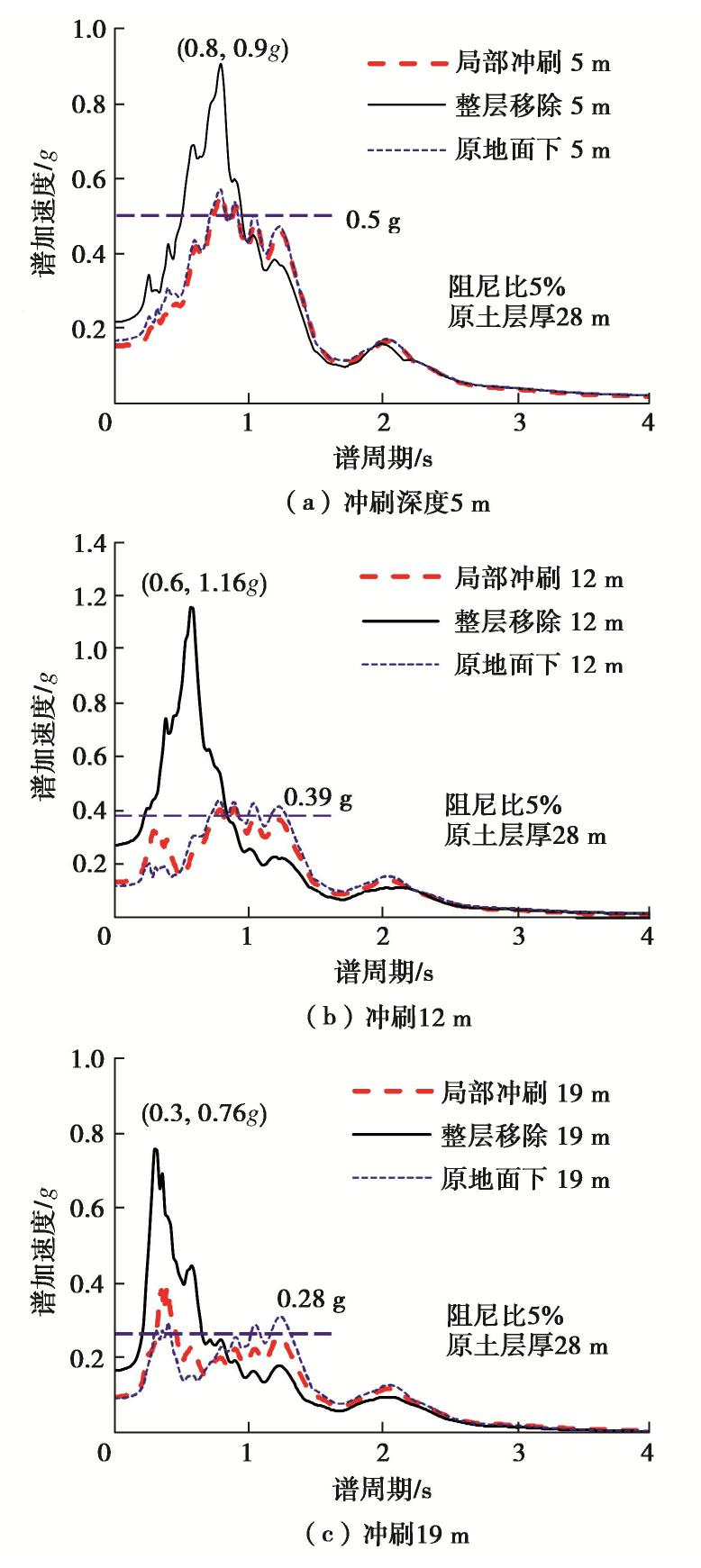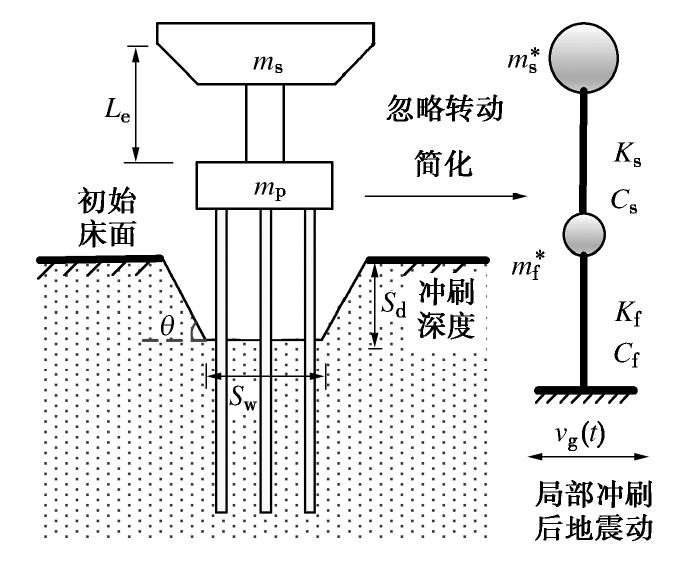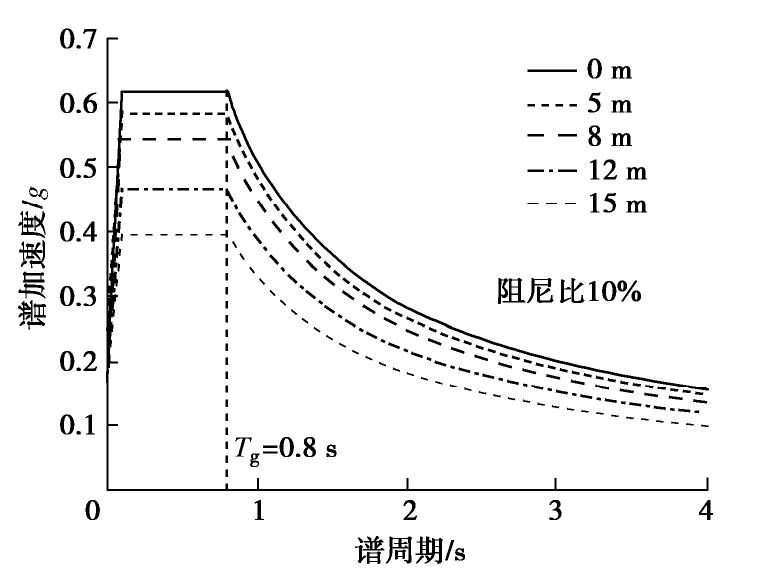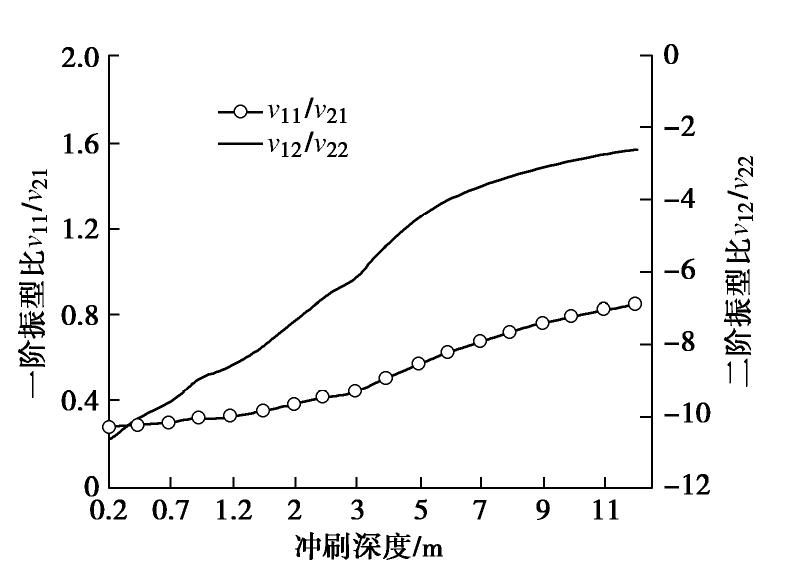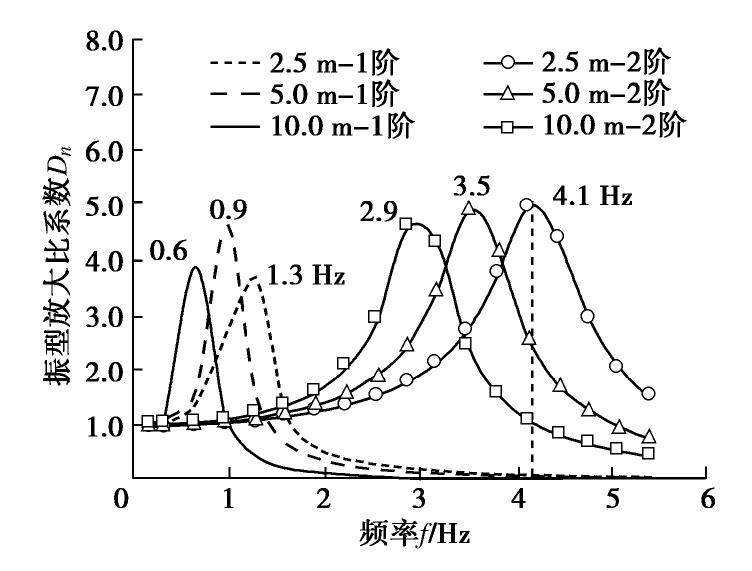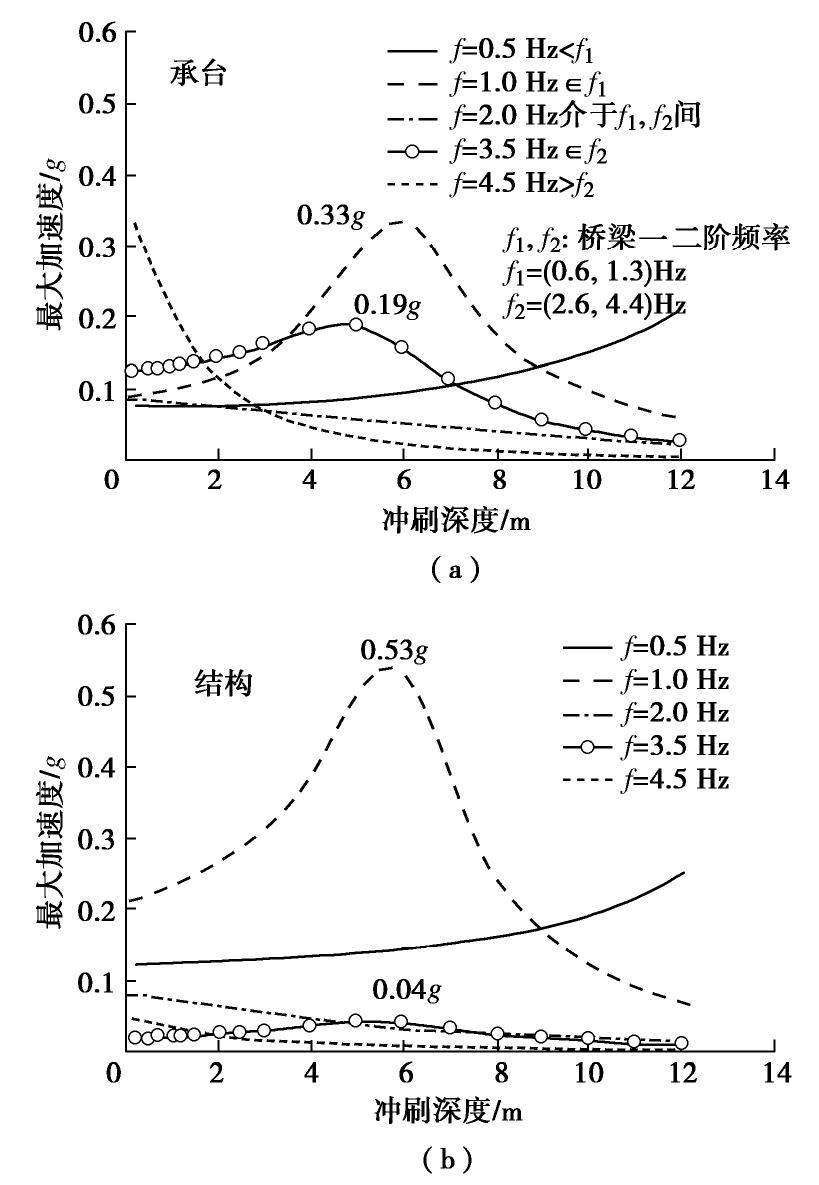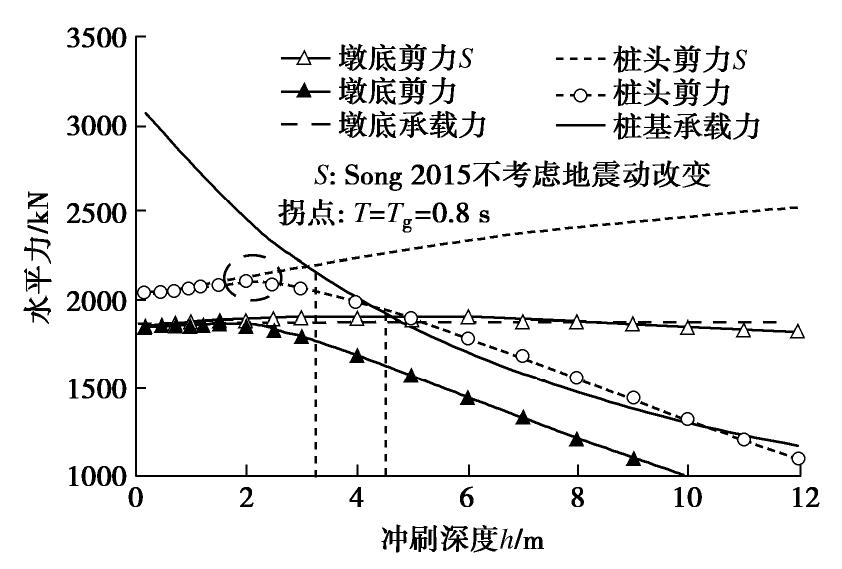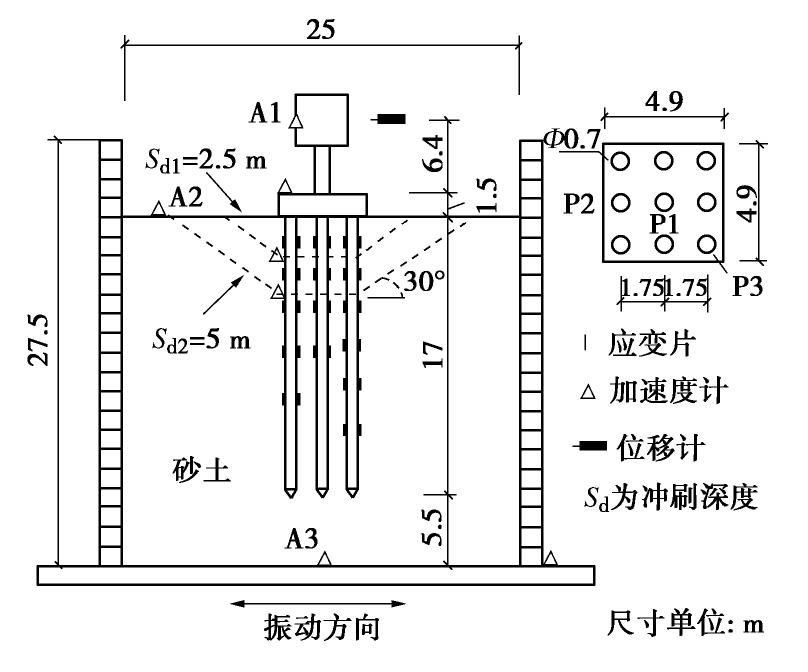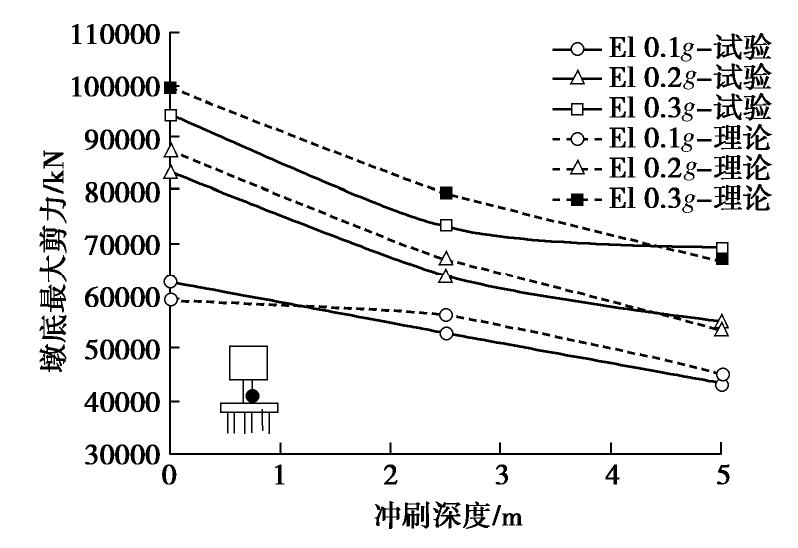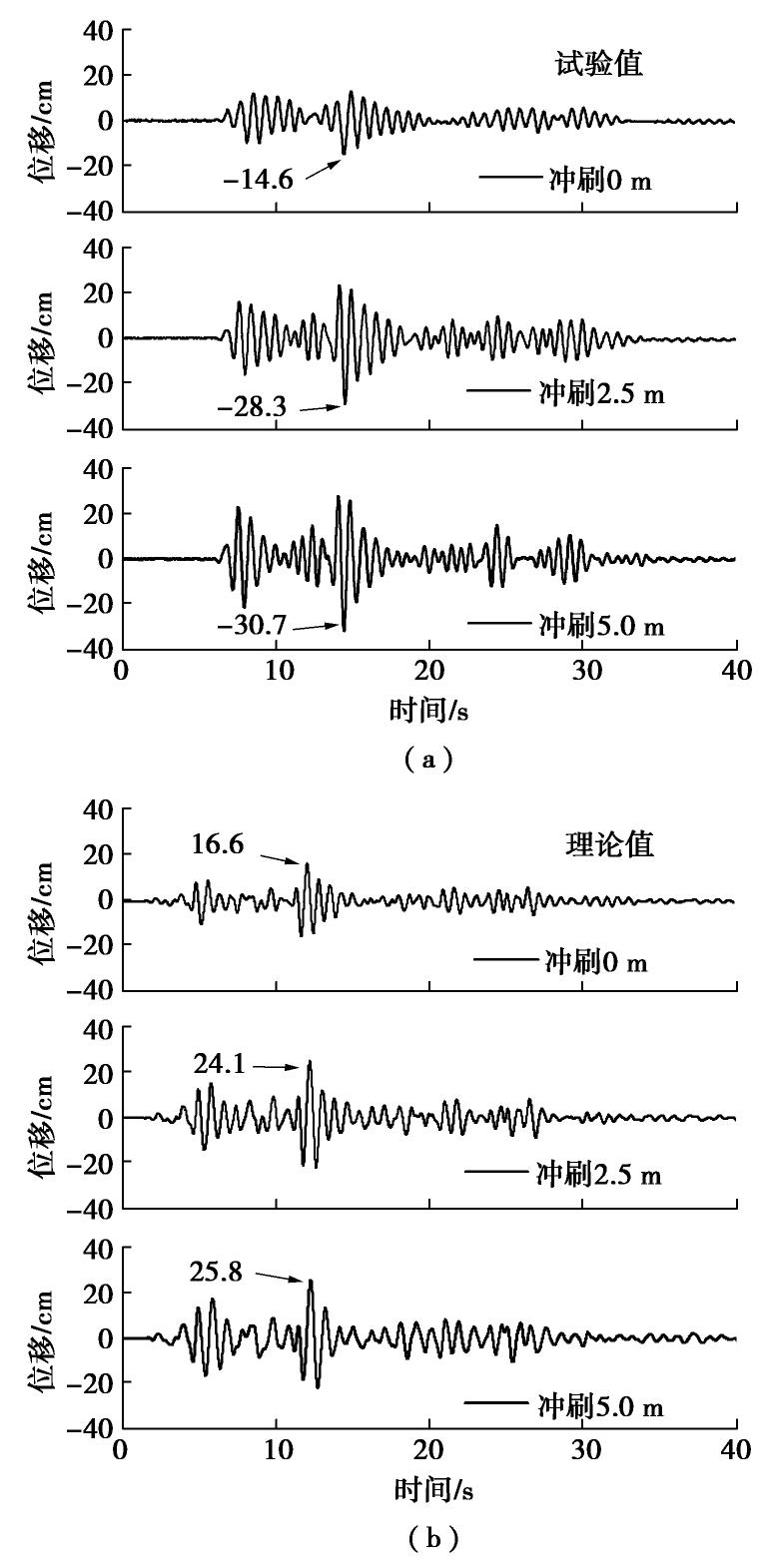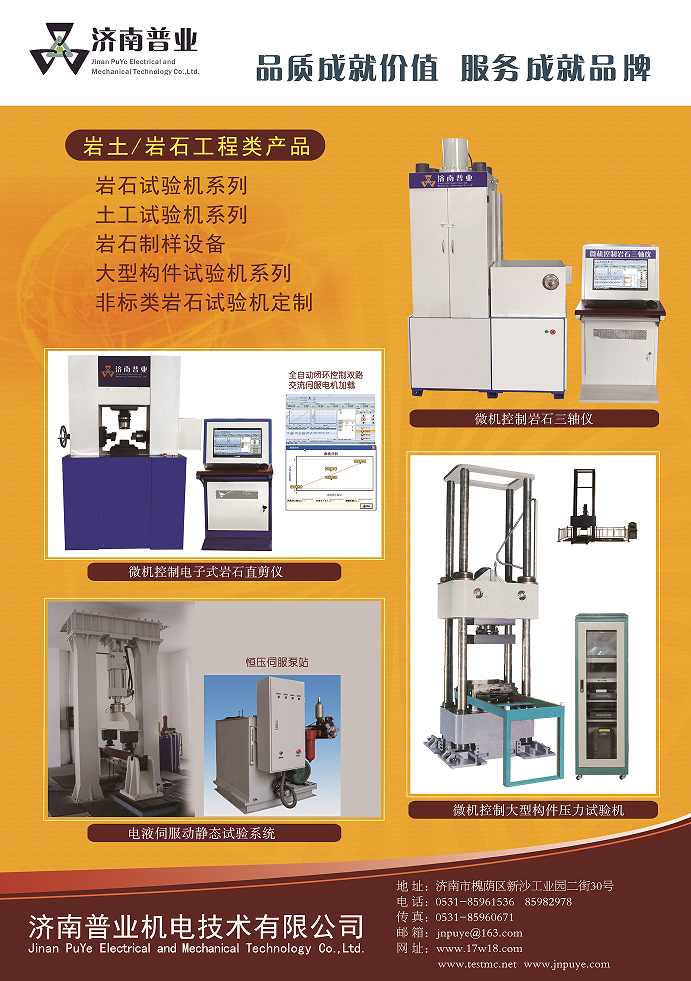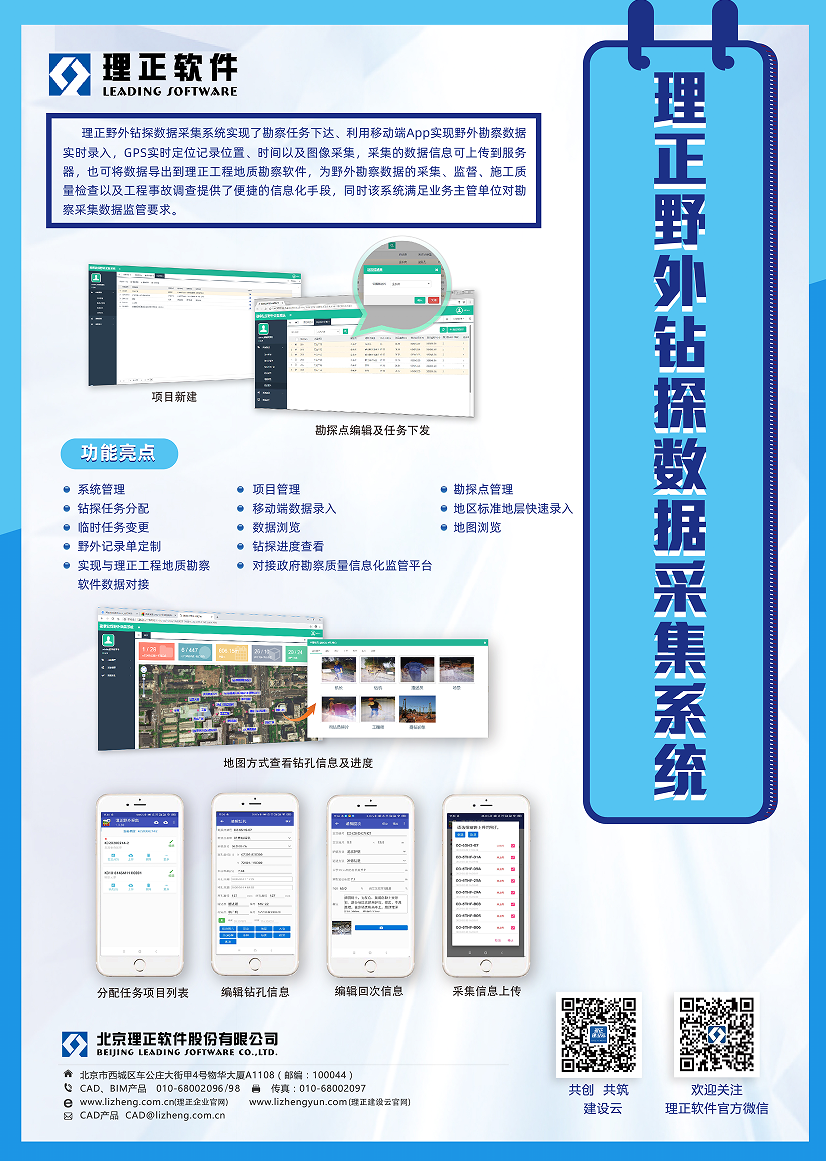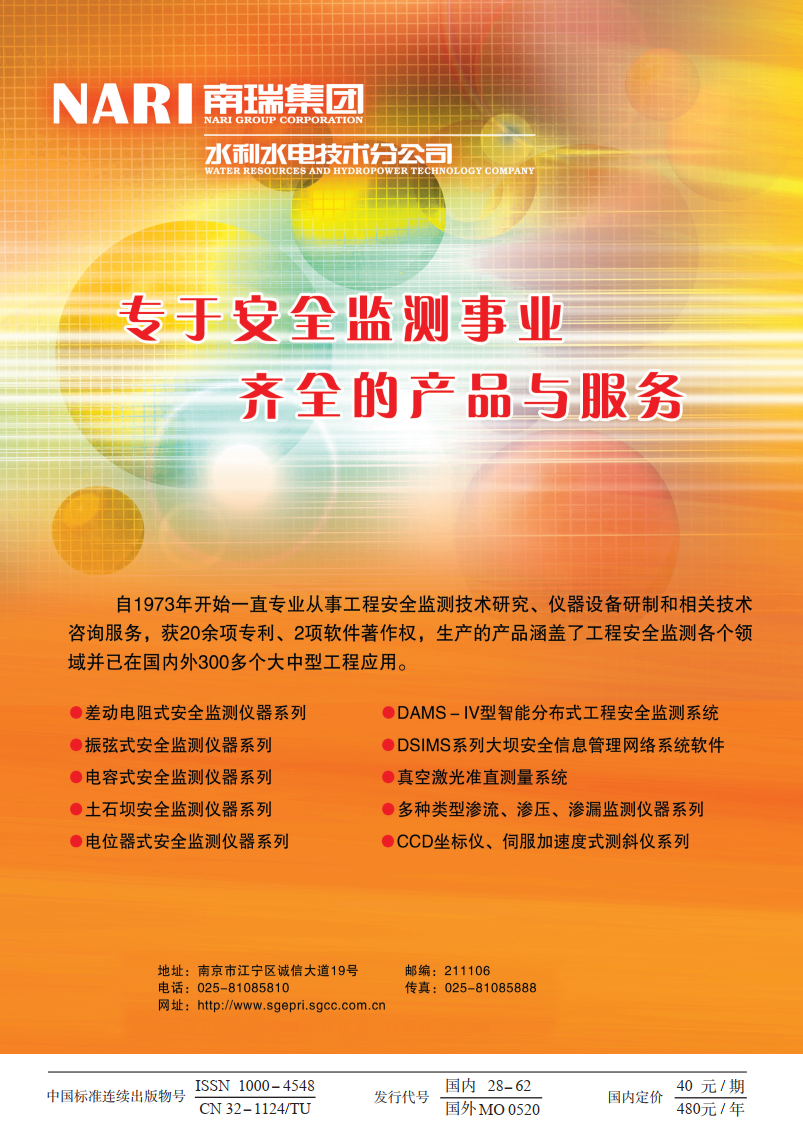Simplified analysis of dynamic response of pile-supported bridge under local scour and verification by centrifugal shaking tests
-
摘要: 冲刷导致桩周土体流失,改变了场地的地震动特性,同时影响了桥梁的抗震性能。为研究局部冲刷下桩基桥梁动力特性及潜在破坏风险,探讨了冲刷场地的地震动特性,给出局部冲刷场地的地震动快速计算方法;并在此基础上提出局部冲刷后桩基桥梁地震分析简化模型,通过振型叠加法计算桥梁的墩底、桩身剪力和最大位移,用以快速评估局部冲刷后桩基桥梁的破坏风险,进而确定临界破坏冲刷深度;为验证模型的正确性,开展了50g重力下桩基桥梁离心振动台试验,桥梁上部结构简化为质量块,基础采用3×3群桩。按照冲刷深度分为3个工况,每个工况下输入白噪声和El-Centro波。研究表明,一般冲刷使得场地周期减小,但局部冲刷对场地周期影响不明显,局部冲刷坑坡角对场地的地震动几乎没有影响;局部冲刷场地与一般冲刷场地的地震动差别较大,但与原场地的地震响应基本相似;桥梁响应最大时的冲刷深度取决于桥梁频率与地震波主要波频的关系。该简化方法计算的桥梁反应与试验结果相近,因此,可用于局部冲刷条件下桥梁的地震反应快速计算、震害风险评估和临界破坏冲刷深度确定。Abstract: Scour causes the erosion of soil, changes the seismic response of site, and also influences the seismic properties of bridge. To investigate the dynamic behavior and damage potential of pile-supported bridges at local scour site, the effects of scour on the ground motion of site are firstly discussed, and a fast calculation method for calculating ground motion is presented. Next, a simplified model describing the bridge response is put forward, which considers the ground motion changes caused by local scour. Then the shear force at the pier bottom and pile head, and the maximum displacement of bridge are calculated by the modal superposition method so as to quickly evaluate the damage potential of bridge after scour and further determine the critical damage scour depth. Finally, the centrifugal shaking tests on the pile-supported bridge are conducted under 50g to verify the accuracy of this model. The superstructure of the bridge supported by 3×3 pile-group foundation is simplified as a mass block. There are 3 scour depth conditions. It is found that the site period obviously decreases under general scour, and hardly changes under local scour. The slope angle of local scour hole has virtually no impact on the ground motions of site. The motions at local scour sites are quite different from those at general scour sites, but similar to those at the original free site at the same depth. The scour depth, where the bridge reaches the greatest response, depends on the interrelation between bridge period and dominant frequency of the earthquake. The centrifuge tests further prove that the proposed model can be applied to the fast calculation of seismic response, the assessment of potential of scoured bridge and the critical scour depth under earthquakes.
-
0. 引言
振杆密实法是一种新兴的可液化地基与黄土地基处理方法,该法通过振动杆在沉杆过程中与土体发生共振,土体吸收振动能量并进一步密实[1-2]。Chow[3]、程远等[4]分别介绍了振杆密实法在美国、中国等地可液化地基中的应用,该方法无需填料,施工简便,取得了显著效果。已有研究表明,振杆密实法的处理效果与施工参数密切相关。Massarsch等[5]应用谱分析原理求得振杆-土的共振频率以低频为主(≤20 Hz),不同土性之间略有差异;程远等[6]研究发现粉土地基的最佳振动频率为17 Hz。Brown等[7]、Wallays等[8]基于静力触探、地表沉降测量等原位测试方法对不同振杆形状的处理效果进行了对比,发现十字杆的处理效果最好,Y字杆次之,Terra杆最差。Janes[9]建议采用振杆密实法进行地基处理时需要进行不同振点间距现场试验以确定合适间距。Massarsch等[10]研究表明大间距长留振的处理效果不如小间距短留振。
上述研究成果主要应用于可液化地基,振杆密实法在湿陷性黄土地基中采用上述施工参数是否适用仍不明确。本文利用自主研发的振杆密实施工设备在湿陷性黄土地基的应用开展现场试验研究,探究了振动频率、喷气压力、钻头形式、振点间距对施工效率和处理效果的影响。研究成果可为振杆密实法在湿陷性黄土地基中的进一步应用提供技术参考。
1. 试验方案与场地工程概况
1.1 试验设备
采用自主研发的适用于黄土地基的智能化振杆密实施工设备进行现场试验,该设备主要包括①振动系统;②喷气系统;③智能化控制系统;④附属机构系统4部分组成[2]。施工设备详细参数见表1。
表 1 施工设备主要参数Table 1. Main parameters of construction equipments电机功率/kW 激振力/kN 喷气压力/MPa 可调频率/Hz 深度/m 振杆直径/m 90 530 0.5~1.2 0~30 ≤15 0.7 1.2 试验方案
振杆密实法的处理效果受施工设备、土层参数和施工工艺共同影响,其施工参数主要有:振动频率、钻头形式、喷气压力、振点间距。基于此,在试验场地内开展振杆密实单点试验和群点试验:
(1)单点试验:通过试振不同的振动频率和组合钻头形式对湿陷性黄土地基进行处理,对比施工效率和振孔尺寸,寻找最优施工参数,为群点试验提供参考。
(2)群点试验:在单点试验的基础上,选取一定的振动参数对区域进行集中处理,群点试验由27个单点组成,呈正三角形布置。通过改变不同的喷气压力与振点间距,探究其对加固效果的影响,群点试验处理7 d后进行静力触探试验,测试地基承载力变化,静力触探试验每个振区测3个点,分别为振点中心,两点之间,三点形心。
1.3 场地工程概况
本次试验场地位于中兰客专靖远县高铁站场坪区附近,场地内地层岩性主要为第四系全新统冲洪积层(Q4al+pl)砂质黄土,含水率为7.2%~11.5%,孔隙比0.975~1.121,干密度为1.27~1.36 g/cm3,具自重湿陷性,湿陷系数δs=0.010~0.087,自重湿陷系数δzs=0.005~0.024,湿陷性土层厚21~37.3 m,需对其进行地基处理,设计处理深度为8 m。
2. 振杆密实法施工参数分析
2.1 振动频率的影响
参考土体的共振频率,设计了不同振动频率下(14,15,16,17 Hz)下的单点振动试验。图1(a)为不同振动频率下施工速率或振孔参数柱状图。由图1(a)可以看出,随着振动频率的增大,沉杆速率、提升速率先增大后减小,在16 Hz处有最大值。
此外,振孔深度随振动频率的变化趋势与施工速率相似,在16 Hz处有最大值,振孔深度为2.5 m。而不同振动频率下的振孔直径基本相同,为0.7 m,14 Hz下略低,为0.65 m。如果把振杆-地基土看成一个共振体,当振动沉杆的振动频率接近于处理土体的固有频率时,振杆与土体产生强迫振动,此时共振体的振幅达到最大,沉杆过程功率消耗最低,施工速率最快,密实效率达到最佳。因此判断该场地的湿陷性黄土地基,振杆-土的共振频率为16 Hz。
2.2 组合钻头形式的影响
在可液化地基处理中,振杆形状对处理效果的影响显著。然而通过现场试振发现,黄土的强结构性使得钻头形式比振杆形式对其影响更大。因此设计了3种组合形式的钻头(图2)进行单点试振试验,得到不同组合钻头形式的施工速率与振孔参数柱状图如图1(b)所示。
由图1(b)可以看出,相对于普通钻头,3种组合钻头的施工速率和振孔深度均有明显提升,施工速率提高约100%~200%,振孔深度增大约50%,这主要是因为普通钻头在沉杆过程中翼片间会发生黏结堵塞现象,使得钻头阻力增大,沉杆困难,甚至无法打至设计深度。而组合钻头的翼片间相互错开,在刺入土体过程中可以将黏结在翼片之间的土体破坏,减少黏结现象,从而有效提高沉杆速率。此外,对比不同形式的组合钻头可以看出,A型钻头的沉杆速率、提升速率、振孔深度均最大,因此判断在该场地条件下,这种形式的组合钻头最适宜。不同钻头的振孔直径均为0.7 m,表明振孔直径与振杆直径有关,与钻头形式无关。
2.3 喷气压力的影响
为了探究喷气压力对加固效果的影响,分别设置不同的喷气压力(0.6,0.8,1.0 MPa),基于单点试验结果,控制振动频率为16 Hz,钻头形式为A型,振点间距为1.2 m,进行了群点试验。
不同测点处锥尖阻力与侧壁阻力随深度变化的关系曲线如图3所示。可以看出,不论气压大小,两点之间、三点形心处的锥尖阻力和侧壁阻力较处理前提升约150%~250%,表明振杆密实法有效提高了孔间土的强度及密实度。在两点之间,0.6 MPa处理区的锥尖阻力和侧壁阻力均为最大,1.0 MPa处理区最小,表明小气压对两点之间强度增长有益。在三点之间,1.0 MPa处理区的锥尖阻力和侧壁阻力最大,0.6 MPa与0.8 MPa的试验数值相对较小,原因在于1.0 MPa的气压加上留振作用破坏了0.4 m厚的两点间的土层,且未经有效压实。综合对比3个不同气压处理区的静力触探试验结果发现,喷气压力为0.8 MPa时两点之间、三点形心处较未加固区都有较大提高,且分布较均匀,可推荐作为施工参数使用。
2.4 振点间距的影响
分别设置不同振点间距(1.1,1.2,1.4 m),控制振动频率为16 Hz,钻头形式为A型,喷气压力为0.8 MPa进行现场群点试验。试验发现,当振点间距为1.1 m时,由于间距过小,振点间易发生串孔现象,导致振杆倾斜,无法形成振坑。
不同间距下锥尖阻力及侧壁阻力随深度变化曲线如图4所示。可以看出,相对于处理前,处理后的振区的锥尖阻力明显提升约200%~300%。对比不同振点间距的锥尖阻力可以发现,在振点中心处,1.2 m处理区与1.4 m处理区的锥尖阻力比较接近,表明振点间距对振孔中心处的强度影响不大。在两点中之间、三点形心处,1.2 m处理区的锥尖阻力和侧壁阻力明显比1.4 m处理区的大约50%,表明振点间距越小,加固效果越显著。振杆密实法对地基土的加固是依靠振动能量,而振动能量是以振动波的形式传递,波的传播随距离增大逐渐衰减,振点间距越小,振动波的叠加效应也越明显。此外,由于是群点试验,振点间距越小,挤密效果亦更好,但振点间距过小容易造成串孔现象。在该场地条件下,参照《铁路工程地质原位测试规程》(TB 10018—2018)中天然地基基本承载力经验公式,计算得到该场地设计承载力(180 kPa)对应的锥尖阻力约为3.2 MPa。1.2 m和1.4 m振点间距处理后的地基土,除表层土体外,均达到设计指标。
3. 结论
本文对振杆密实法处理湿陷性黄土地基的施工参数开展了现场试验研究,主要结论如下:
(1)在本文的场地条件下,振杆密实法处理湿陷性黄土的最优振动频率为16 Hz,该频率下施工速率和密实效果最佳。
(2)黄土的强结构性使得钻头形式比振杆形式对其施工影响更为显著。设计了几种不同的组合钻头,其中A型钻头能防止钻头处的土体黏结,进而提高施工效率。
(3)提出了气动辅助振杆密实的施工方式,基于静力触探试验对不同喷气压力下的处理效果进行了评价。分析结果表明0.8 MPa气压下土体强度提升明显,且静力触探曲线较为均匀,可参考作为施工参数。
(4)不同振点间距的群点试验结果表明,振杆密实法处理后的湿陷性黄土地基锥尖阻力和侧壁阻力提升约200%~300%。振点间距越小,加固效果越显著,但振点间距过小容易造成串孔现象,以1.2~1.4 m为宜。
-
表 1 模型设计相似比例
Table 1 Scale of design model
部件 参数 模型 原型 比例 桩 刚度/(N·m2) 71.9 44937500 1∶504 外径/m 0.014 0.7 1∶50 弹模/GPa 70 — — 承台 质量/kg 0.78 97500 1∶503 上部 质量/kg 2.31 288500 1∶503 结构 周期/s 0.009 0.51 1∶50 表 2 试验工况
Table 2 Testing programs
冲刷深度/m 峰值加速度/g 白噪声 El-Centro波 0 0.05 0.1, 0.2, 0.3 2.5 0.05 0.1, 0.2, 0.3 5.0 0.05 0.1, 0.2, 0.3 -
[1] WANG C, YU X, LIANG F Y. A review of bridge scour: mechanism, estimation, monitoring and countermeasures[J]. Natural Hazards, 2017, 87(3): 1881-1906. doi: 10.1007/s11069-017-2842-2
[2] 曹圣华. 苏通大桥巨型群桩基础冲刷防护研究[D]. 南京: 河海大学, 2006. CAO Sheng-hua. Research of Sutong Bridge Huge Pile Foundation Scour[D]. Nanjing: Hohai University, 2006. (in Chinese)
[3] LIN C, BENNETT C, HAN J, et al. Scour effects on the response of laterally loaded piles considering stress history of sand[J]. Computers and Geotechnics, 2010, 37(7/8): 1008-1014.
[4] FOTI S, SABIA D. Influence of foundation scour on the dynamic response of an existing bridge[J]. Journal of Bridge Engineering, 2011, 16(2): 295-304. doi: 10.1061/(ASCE)BE.1943-5592.0000146
[5] ALIPOUR A, SHAFEI B, SHINOZUKA M. Reliability-based calibration of load factors for design of reinforced concrete bridges under multiple extreme events: scour and earthquake[J]. Journal of Bridge Engineering, 2013, 18(5): 362-371. doi: 10.1061/(ASCE)BE.1943-5592.0000369
[6] WANG S C, LIU K Y, CHEN C H, et al. Experimental investigation on seismic behavior of scoured bridge pier with pile foundation[J]. Earthquake Engineering & Structural Dynamics, 2015, 44(6): 849-864.
[7] 梁发云, 陈海兵, 黄茂松, 等. 结构-群桩基础地震响应离心振动台模型试验[J]. 建筑结构学报, 2016, 37(9): 134-141. https://www.cnki.com.cn/Article/CJFDTOTAL-JZJB201609017.htm LIANG Fa-yun, CHEN Hai-bing, HUANG Mao-song, et al. Model test on seismic response of superstructure and pile group[J]. Journal of Building Structures, 2016, 37(9): 134-141. (in Chinese) https://www.cnki.com.cn/Article/CJFDTOTAL-JZJB201609017.htm
[8] WANG X W, YE A J, SHANG Y, et al. Shake-table investigation of scoured pile-group-supported bridges in liquefiable and nonliquefiable soils[J]. Earthquake Engineering & Structural Dynamics, 2019, 48(11): 1217-1237.
[9] GANESH PRASAD G, BANERJEE S. The impact of flood-induced scour on seismic fragility characteristics of bridges[J]. Journal of Earthquake Engineering, 2013, 17(6): 803-828. doi: 10.1080/13632469.2013.771593
[10] WANG Z, DUEÑAS-OSORIO L, PADGETT J E. Influence of scour effects on the seismic response of reinforced concrete bridges[J]. Engineering Structures, 2014, 76: 202-214. doi: 10.1016/j.engstruct.2014.06.026
[11] KLINGA J V, ALIPOUR A. Assessment of structural integrity of bridges under extreme scour conditions[J]. Engineering Structures, 2015, 82: 55-71. doi: 10.1016/j.engstruct.2014.07.021
[12] 叶爱君, 刘伟岸, 王斌斌. 高桩承台基础与桥梁结构的动力相互作用[J]. 同济大学学报(自然科学版), 2007, 35(9): 1163-1168. https://www.cnki.com.cn/Article/CJFDTOTAL-TJDZ200709002.htm YE Ai-jun, LIU Wei-an, WANG Bin-bin. Dynamic interaction between high-rise pile cap foundation and bridge structure[J]. Journal of Tongji University (Natural Science), 2007, 35(9): 1163-1168. (in Chinese) https://www.cnki.com.cn/Article/CJFDTOTAL-TJDZ200709002.htm
[13] XU Y, SHANG Y, YE A. Dynamic interaction between bridge pier and its large pile foundation considering earthquake and scour depths[J]. Advances in Structural Engineering, 2016, 19(9): 1390-1402. doi: 10.1177/1369433216642077
[14] SONG S T, WANG C Y, HUANG W H. Earthquake damage potential and critical scour depth of bridges exposed to flood and seismic hazards under lateral seismic loads[J]. Earthquake Engineering and Engineering Vibration, 2015, 14(4): 579-594. doi: 10.1007/s11803-015-0047-9
[15] 陆雪骏. 长江感潮河段桥墩冲刷研究[D]. 上海: 华东师范大学, 2016. LU Xue-jun. Research on the Local Scour at Bridge Piers in the Tidal Reach of the Changjiang River[D]. Shanghai: East China Normal University, 2016. (in Chinese)
[16] 何泓男, 戴国亮, 杨炎华, 等. 局部冲刷下群桩水平承载试验研究[J]. 岩土力学, 2015, 36(10): 2939-2945. https://www.cnki.com.cn/Article/CJFDTOTAL-YTLX201510027.htm HE Hong-liang, DAI Guo-liang, YANG Yan-hua, et al. Experimental study of lateral bearing behavior of pile group foundation under local scour condition[J]. Rock and Soil Mechanics, 2015, 36(10): 2939-2945. (in Chinese) https://www.cnki.com.cn/Article/CJFDTOTAL-YTLX201510027.htm
[17] LIN C, HAN J, BENNETT C, et al. Analysis of laterally loaded piles in sand considering scour hole dimensions[J]. Journal of Geotechnical and Geoenvironmental Engineering, 2014, 140(6): 04014024. doi: 10.1061/(ASCE)GT.1943-5606.0001111
[18] ZHANG H, CHEN S L, LIANG F Y. Effects of scour-hole dimensions and soil stress history on the behavior of laterally loaded piles in soft clay under scour conditions[J]. Computers and Geotechnics, 2017, 84: 198-209. doi: 10.1016/j.compgeo.2016.12.008
[19] AMINI A, MELVILLE B W, ALI T M, et al. clear-water local scour around pile groups in shallow-water flow[J]. Journal of Hydraulic Engineering, 2012, 138(2): 177-185.
[20] 刘晶波, 王振宇, 杜修力, 等.波动问题中的三维时域黏弹性人工边界[J]. 工程力学, 2005, 22(6): 46-51. https://www.cnki.com.cn/Article/CJFDTOTAL-GCLX200506007.htm LIU Jing-bo, WANG Zhen-yu, DU Xiu-li, et al. Three-dimensional visco-elastic artificial boundaries in time domain for wave motion problems[J]. Engineering Mechanics, 2005, 22(6): 46-51. (in Chinese) https://www.cnki.com.cn/Article/CJFDTOTAL-GCLX200506007.htm
[21] LEE S J, KOMATITSCH D, HUANG B S, et al. Effects of topography on seismic-wave propagation: an example from Northern Taiwan[J]. Bulletin of the Seismological Society of America, 2009, 99(1): 314-325.
[22] KHANBABAZADEH H, IYISAN R. A numerical study on the 2d behavior of clayey basins[J]. Soil Dynamics and Earthquake Engineering, 2014, 66: 31-41
[23] LIN C. Evaluation of Lateral Behavior of Pile-Supported Bridges Under Scour Conditions[D]. Kansas: University of Kansas, 2012
[24] MAKRIS N, GAZETAS G. Dynamic pile-soil-pile interaction. Part II: Lateral and seismic response[J]. Earthquake Engineering & Structural Dynamics, 1992, 21(2): 145-162.
[25] PRIESTLEY M J N, SEIBLE F, CALVI G M. Seismic Design and Retrofit of Bridges[M]. New York: John Wiley & Sons, 1996.
[26] HWANG J S, SHENG L H, GATES J H. Practical analysis of bridges on isolation bearings with Bi-linear hysteresis characteristics[J]. Earthquake Spectra, 1994, 10(4): 705-727.
[27] SONG S T, CHAI Y H. Performance assessment of multi-column bents with extended pile-shafts under lateral earthquake loads[J]. The IES Journal Part A: Civil & Structural Engineering, 2008, 1(1): 39-54.
-
期刊类型引用(8)
1. 褚洪涛. 低能强夯联合水泥土搅拌桩在路基工程中的应用. 广东建材. 2025(03): 122-126 .  百度学术
百度学术
2. 刘齐建,苏耀辉,黄奕彬,邓涛. 地面超载下摩擦单桩负摩阻力的连续介质力学解. 建筑科学与工程学报. 2024(02): 173-180 .  百度学术
百度学术
3. 李子林. 大跨度排架结构储豆堆场地基处理方案研究. 福建建材. 2024(04): 69-72 .  百度学术
百度学术
4. 刘余杰. 水泥土搅拌桩在农村公路桥梁基础施工中的应用研究. 交通世界. 2024(13): 40-43 .  百度学术
百度学术
5. 张浩,赵宇,王中,刘维正. 芯桩承载扩体预制桩的荷载传递计算分析. 岩土工程学报. 2024(12): 2503-2512 .  本站查看
本站查看
6. 周节定,胡磊,王乾浩. 同步同心式斜撑桩侧摩阻力现场试验研究. 建筑施工. 2023(04): 770-772+785 .  百度学术
百度学术
7. 郑贺,鲍宇,刘汉臣. MC劲性复合桩在硬土层中应用的试验研究. 地基处理. 2023(03): 262-268 .  百度学术
百度学术
8. 朱田. 分布式光纤测试技术在水泥土复合管桩检测中的应用. 水利与建筑工程学报. 2023(05): 63-70 .  百度学术
百度学术
其他类型引用(0)



 下载:
下载:




